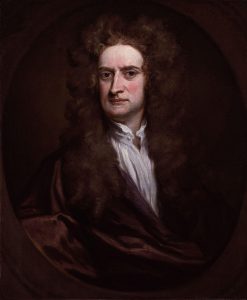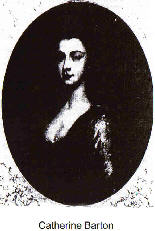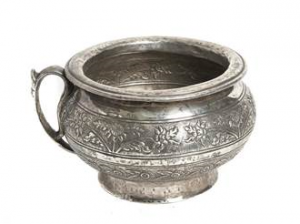The catechism of the Catholic Church states that those who go to heaven will be able to enjoy all good things without any mixture of evil. Something similar could be said of the image that nineteenth-century hagiographies were supposed to convey of mythical figures of science such as Isaac Newton: they had to possess all the virtues without any possible defects. Thus, in addition to being a brilliant scientist, Newton is described as a Spartan in eating and drinking, almost a vegetarian, who lived a life without ostentation or vanity.

This does not sit well with many of the available documents.
Newton left Cambridge University in 1696, when he was appointed Director of the English Mint on the recommendation of Lord Halifax. Subsequently, in 1699, he was promoted to Master, which guaranteed him financial rewards available to very few of the crown’s senior officials. The position of Master was a sinecure which, in addition to a salary of £500 a year, included a percentage of the coinage minted, which meant that Newton, in the twenty-eight years he held the post – until his death in 1727 – earned an average of more than £2,000 each year (compare this with his salary as a professor at Cambridge: £120 a year).
During this period, evenings at Newton’s London home were not uncommon, hosted by Catherine Barton, a niece of Newton’s who lived with him. Voltaire’s mischievous interpretation of Newton’s appointment as Director of the Mint is famous: “I thought in my youth,” he wrote in his Philosophical Letters, “that Newton owed his fortune to his enormous merits. I had supposed that the Court and the City of London had made him Grand Master of the realm by acclamation. Nothing of the sort. Isaac Newton had a charming niece, Madame Conduitt; the Chancellor of the Exchequer, Halifax, was very fond of her. Infinitesimal calculus and gravitation would have been of little use to him without his pretty niece”. Voltaire either exaggerated the gossip or was not well informed at all, because when Newton was appointed Director of the Mint his niece was seventeen years old and Lord Halifax may never have seen her. Born in 1679, Catherine Barton was the daughter of one of Newton’s half-sisters, and went to live with Newton soon after he settled in London – she lived with him for 20 years, first as a single woman and then when she married John Conduitt in 1717.

Although there seems to have been no connection between Newton’s arrival at the Mint and his niece’s connection with Lord Halifax, it is true that they later became lovers. When Halifax died in 1714, Newton’s niece inherited a substantial fortune from him: “In token,” wrote Halifax in his will, “of the sincere love, affection and esteem which I have so long received from your person, and as a small reward for the pleasure and happiness which I have received from your conversation”. As Flamsteed, astronomer royal and Newton’s enemy, mischievously remarked: “Too much money only for the excellence of her conversation”.
Catherine Barton had a reputation as seductive and sophisticated, not only in England but also in continental Europe, partly because of various libels that circulated about her relations with Halifax, partly because of Voltaire’s accounts of her; Catherine was said to have turned her evenings at her uncle’s house into coveted social events attended by scholars, politicians, poets, scientists and philosophers from all over the world, whether they wanted to meet the English genius or rather to have a few laughs with his dazzling niece, one could not be sure.
The notoriety of these receptions contrasts with the descriptions of Newton found in biographies of the 18th, 19th and early 20th centuries, where, as I wrote earlier, he is described as a spartan eater and drinker, almost a vegetarian, who led a life without ostentation or vanity.

But the fact remains that Newton had his own carriage and as many as six servants, and invoices have survived that hint at near-pantagruelous feasts – one mentions a goose, two turkeys, two rabbits and a hen, all in the same week. “After his death,” wrote Westfall in his biography of Newton, “his estate settled a debt of £10, 16 shillings and 4 pence to a butcher and two more, totalling £2, 8 shillings and 9 pence to a poulterer and a fishmonger. In contrast, he owed the greengrocer only 19 shillings and the grocer 2 pounds, 8 shillings and 5 pence. A bill of 7 pounds 10 shillings or so for fifteen barrels of beer again suggests a less than heroic temperance”.
The inventory of Newton’s possessions lists silver platters, trays, candlesticks and silver cutlery… And furthermore, Newton is recorded as having owned two chamber pots, also in silver. As Westfall said: “No one would call this Spartan utilitarianism”.
References
A.J. Durán, Crónicas matemáticas, Crítica, Barcelona, 2018.
R. Westfall, Never at rest, a biography of Isaac Newton, Cambridge University Press, Cambridge, 1980.

Leave a Reply